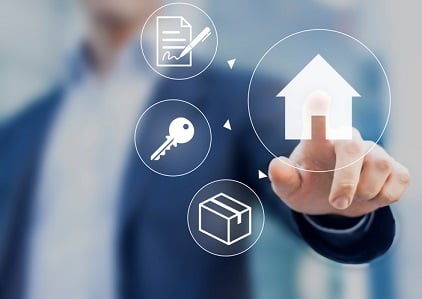What is a digital mortgage and is it the same as the good old traditional paper mortgage? All fair questions, but getting a straight answer may surprise you

What would the world look like if a borrower could research, select, apply for and close a mortgage loan all electronically and without ever sending one document? Welcome to the digital mortgage revolution. But what exactly is a digital mortgage? How does the borrower receive one and is it the same as the good old traditional paper mortgage? All fair questions, but getting a straight answer may surprise you.
Some experts say the digital mortgage is just a reboot of the eMortgage era that has been around since the early 2000s. The eMortgage was slow to be adopted in the mortgage industry. Moving to a paperless environment was always senior management’s goal, but the front-end staff was reluctant to give up their paper, their “woobie.” Both eSignatures and eNotes were an integral part of the eMortgage process. However, since the GSEs and most investors didn’t recognize them, the eMortgage was doomed; which is so crazy because President Clinton signed the eSign Act into law in June 2000, and it took nearly 14 years for the government and investors to fully accept them.
It’s been a long time coming, but we now have a shiny new product called the digital mortgage. This is a huge positive for borrowers since it will make the mortgage process faster, simpler and more transparent. It is also a win for lenders since it saves time and money, while remaining low-risk and compliant. The biggest risk in a mortgage loan will always be fraud. Fraud risk was the biggest reason why the eMortgage was never adopted. With technological advancements such as receiving income and tax return data all electronically and from a reliable source, we now have the ability to pull financial banking data and documents as well. This means the borrower is no longer required to send pay stubs, W2s and bank statements. Previously, these documents came directly from the borrower and had to be checked, double-checked and validated. Now a borrower can consent to provide this data electronically and have it validated within seconds, saving time and money. This is such a fantastic idea that even Fannie Mae is on board with their Day 1 Certainty initiative.
Reducing risk and improving customer experience is the name of the game. However, some borrowers will not consent to giving their lenders direct access to their Turbo Tax and bank accounts, so there needs to be improvement to the “hybrid” digital process. JD Powers reports that customer service and customer experience are at the top of the list for borrowers. While the digital mortgage assists lenders with the borrower’s experience, to remain competitive and successful, lenders still need to maintain their customer service the good old-fashioned way—communication.
Some experts say the digital mortgage is just a reboot of the eMortgage era that has been around since the early 2000s. The eMortgage was slow to be adopted in the mortgage industry. Moving to a paperless environment was always senior management’s goal, but the front-end staff was reluctant to give up their paper, their “woobie.” Both eSignatures and eNotes were an integral part of the eMortgage process. However, since the GSEs and most investors didn’t recognize them, the eMortgage was doomed; which is so crazy because President Clinton signed the eSign Act into law in June 2000, and it took nearly 14 years for the government and investors to fully accept them.
It’s been a long time coming, but we now have a shiny new product called the digital mortgage. This is a huge positive for borrowers since it will make the mortgage process faster, simpler and more transparent. It is also a win for lenders since it saves time and money, while remaining low-risk and compliant. The biggest risk in a mortgage loan will always be fraud. Fraud risk was the biggest reason why the eMortgage was never adopted. With technological advancements such as receiving income and tax return data all electronically and from a reliable source, we now have the ability to pull financial banking data and documents as well. This means the borrower is no longer required to send pay stubs, W2s and bank statements. Previously, these documents came directly from the borrower and had to be checked, double-checked and validated. Now a borrower can consent to provide this data electronically and have it validated within seconds, saving time and money. This is such a fantastic idea that even Fannie Mae is on board with their Day 1 Certainty initiative.
Reducing risk and improving customer experience is the name of the game. However, some borrowers will not consent to giving their lenders direct access to their Turbo Tax and bank accounts, so there needs to be improvement to the “hybrid” digital process. JD Powers reports that customer service and customer experience are at the top of the list for borrowers. While the digital mortgage assists lenders with the borrower’s experience, to remain competitive and successful, lenders still need to maintain their customer service the good old-fashioned way—communication.



